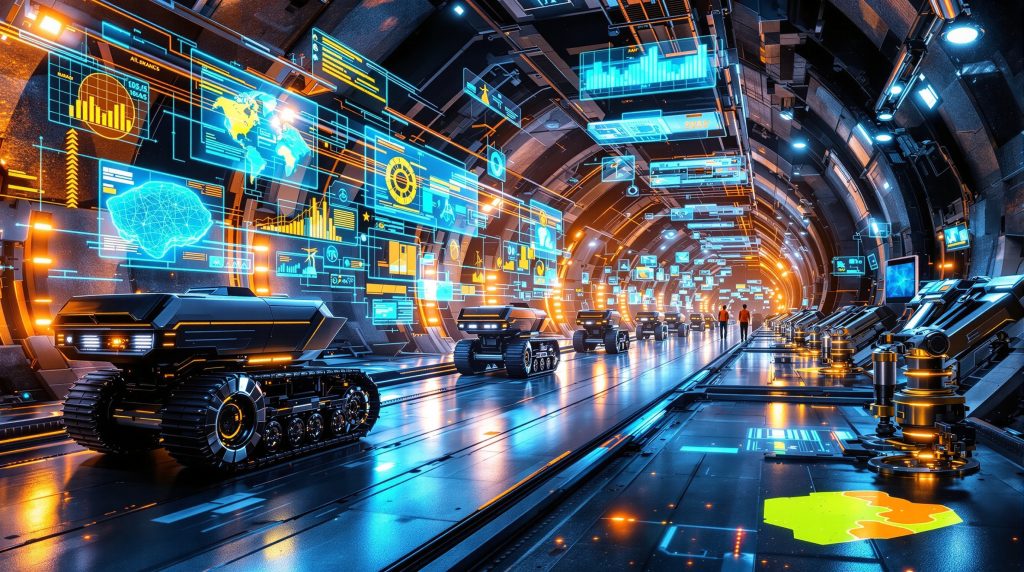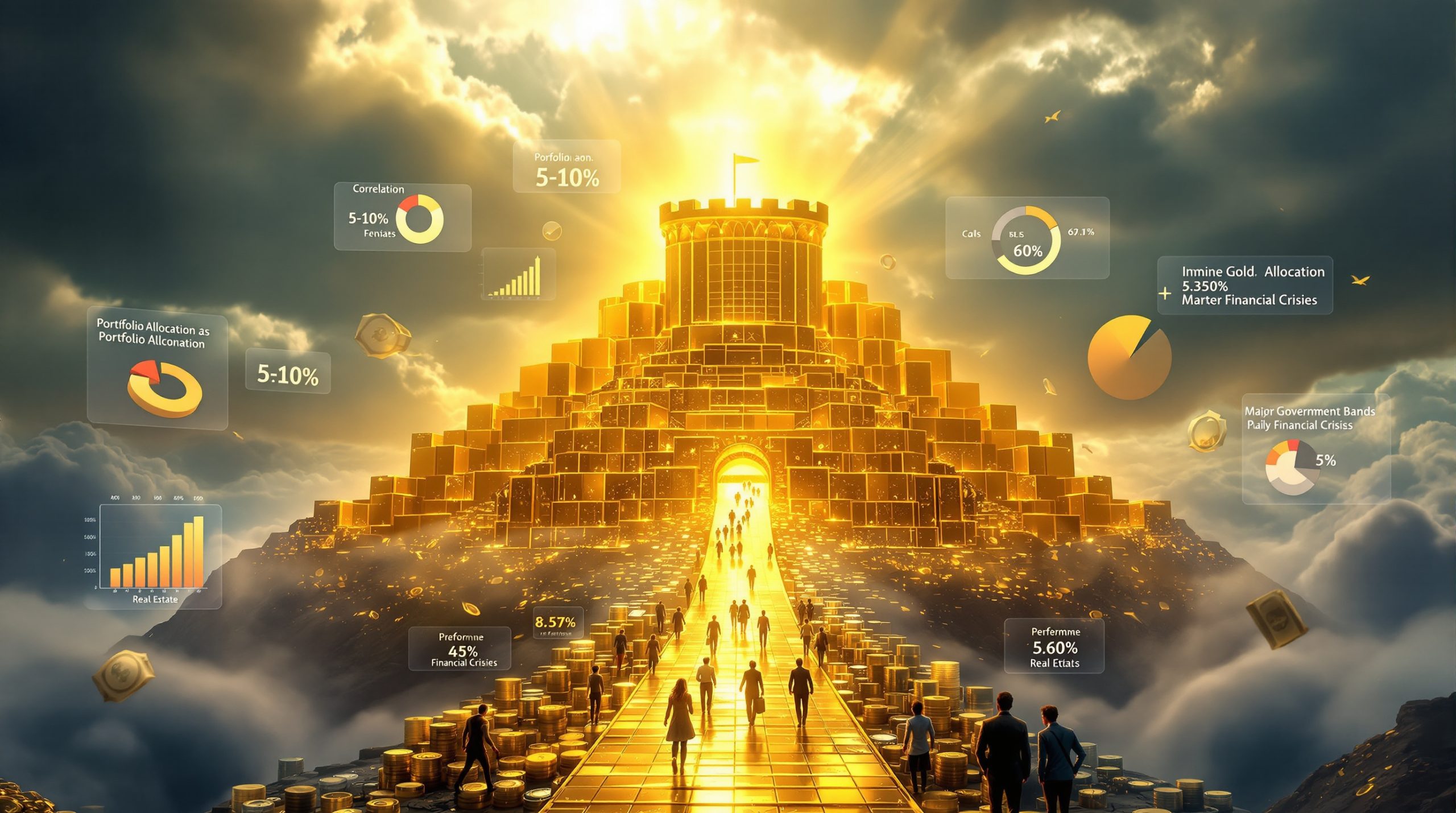Understanding the Digital Revolution in Resource Extraction
Mining operations across the globe are undergoing a profound transformation that redefines how resources are discovered, extracted, and processed. This technological revolution addresses critical industry challenges including operational efficiency, worker safety, environmental sustainability, and supply chain transparency while meeting increasing global demand for essential minerals.
Modern mining companies are discovering that integrating advanced technologies creates significant competitive advantages. Automation systems reduce operational costs by 15-25%, while AI-powered predictive maintenance decreases equipment downtime by 30-50%. Perhaps most impressively, digital twin technology improves operational efficiency by 20-35%, demonstrating how mining and technology work together to create unprecedented value.
The convergence of artificial intelligence, robotics, Internet of Things sensors, and blockchain technology is creating intelligent mining ecosystems that optimise every aspect of resource extraction. These integrated systems enable mining companies to maintain productivity while adhering to increasingly stringent environmental and safety regulations. Furthermore, data-driven mining operations are becoming essential for companies seeking to remain competitive in today's market.
Machine Learning Transforms Predictive Operations
Artificial intelligence algorithms now analyse massive datasets from sensors, geological surveys, and operational equipment to predict equipment failures weeks before they occur. This predictive capability allows mining operations to schedule maintenance during planned downtime periods, significantly reducing operational disruption and maintenance costs.
Computer vision technology enhances ore sorting accuracy by analysing mineral composition in real-time. These systems can identify valuable minerals with precision that exceeds human capabilities, leading to improved recovery rates and reduced waste. Machine learning models continuously improve their performance as they process more geological data, creating increasingly accurate predictions about mineral deposits and extraction patterns.
Key AI applications transforming mining include:
• Geological data interpretation – Processing seismic surveys and core samples to identify promising mineral deposits
• Real-time ore grade analysis – Instant assessment of mineral quality during extraction processes
• Energy consumption optimisation – Dynamic adjustment of power usage based on operational demands
• Predictive maintenance scheduling – Forecasting equipment failures before they impact production
Accelerated Mineral Discovery Through Intelligence
Mining exploration traditionally required years of field surveys, geological sampling, and expensive drilling programs. AI technology now processes satellite imagery, historical mining records, and geological databases to identify promising mineral deposits in months rather than years. This acceleration dramatically reduces exploration costs while improving discovery success rates.
Advanced algorithms analyse patterns in geological formations, mineral occurrences, and environmental conditions to predict where valuable resources are most likely to exist. These systems can evaluate thousands of potential sites simultaneously, prioritising the most promising locations for detailed investigation. Moreover, 3D geological modelling provides unprecedented visualisation capabilities for exploration teams.
Machine learning models trained on successful mining operations worldwide can identify subtle geological indicators that human geologists might overlook. This capability is particularly valuable in remote or underexplored regions where traditional exploration methods face logistical challenges.
Autonomous Systems Revolutionise Mining Safety
Robotics and unmanned operations eliminate human exposure to hazardous mining environments while maintaining precision and consistency. Autonomous haul trucks navigate complex mine sites using GPS technology, computer vision, and obstacle detection systems. These vehicles operate continuously without fatigue, reducing workplace accidents and improving operational efficiency.
Robotic drilling systems execute precise drilling patterns while monitoring ground conditions in real-time. These systems can detect unstable ground conditions and adjust their operations accordingly, preventing potentially dangerous situations. Remote-controlled drilling rigs allow operators to work from safe distances while maintaining complete control over drilling operations.
Benefits of autonomous mining systems include:
• 24/7 operational capability without human fatigue limitations
• Consistent performance standards across all operational conditions
• Reduced workplace accidents through elimination of human exposure to hazards
• Enhanced precision in extraction and material handling processes
Remote Operation Centres Enable Centralised Control
Advanced mining operations utilise centralised control rooms where skilled operators manage multiple mining sites simultaneously. High-definition cameras, environmental sensors, and real-time data feeds provide comprehensive visibility into operations across vast mining complexes. This approach maximises the utilisation of expert operators while minimising personnel requirements at individual mining sites.
Operators can respond immediately to changing conditions, equipment malfunctions, or safety concerns across multiple locations. Real-time communication systems enable coordination between remote operators and on-site personnel, ensuring seamless operations even in challenging conditions. Additionally, these technological advances align with broader industry evolution trends that prioritise safety and efficiency.
Remote operation centres also serve as training facilities where new operators can gain experience managing mining equipment without physical risk. Simulation capabilities allow operators to practice responding to emergency scenarios and equipment failures in a controlled environment.
Comprehensive Sensor Networks Transform Mining Intelligence
Internet of Things technology creates interconnected networks of sensors throughout mining operations, monitoring everything from equipment vibration patterns to air quality measurements. These sensor networks provide continuous data streams that enable proactive decision-making and resource optimisation across all aspects of mining operations.
Environmental monitoring systems track air quality, water conditions, and noise levels to ensure compliance with regulatory requirements. Equipment sensors monitor temperature, pressure, vibration, and performance metrics to identify maintenance needs before failures occur. Personnel tracking systems monitor worker locations and safety status throughout mining sites.
IoT monitoring capabilities include:
• Equipment performance metrics – Continuous tracking of machinery health and efficiency
• Environmental conditions – Real-time monitoring of air quality, temperature, and humidity
• Energy consumption patterns – Analysis of power usage across all operational systems
• Worker location and safety status – Tracking personnel and emergency response capabilities
Real-Time Location Systems Enhance Safety Protocols
Real-Time Location Systems track personnel, vehicles, and equipment throughout mining sites using advanced positioning technology. These systems provide complete visibility into mining operations, enabling rapid emergency response and optimal resource allocation. Safety protocols can be automatically triggered when personnel enter restricted areas or when equipment operates outside normal parameters.
RTLS technology enables mining companies to analyse traffic patterns, identify bottlenecks, and optimise logistics across their operations. Historical tracking data reveals opportunities to improve efficiency and reduce operational costs through better coordination of personnel and equipment movements.
Integration with emergency response systems ensures that rescue teams can locate personnel quickly during emergencies. Automated alerts notify supervisors when workers enter hazardous areas or when safety protocols are not being followed. However, successful implementation requires comprehensive modern mine planning that considers these technological capabilities from the outset.
Digital Twins Create Virtual Mining Operations
Digital twin technology creates dynamic virtual representations of mining assets that receive continuous updates from real-time operational data. These virtual models enable scenario testing, performance optimisation, and collaborative planning without disrupting actual mining operations. Engineers can test different extraction methods, equipment configurations, and operational procedures in the virtual environment before implementing changes.
Process simulation capabilities allow mining companies to optimise their operations for different ore grades, market conditions, and equipment configurations. Digital twins can model the impact of equipment failures, weather conditions, or supply chain disruptions, enabling proactive planning for various scenarios. Furthermore, technology in mining continues to drive efficiency and safety improvements across the industry.
Digital twin applications in mining:
• Process simulation and optimisation – Testing operational changes before implementation
• Equipment lifecycle management – Predicting maintenance needs and replacement schedules
• Training and skill development – Providing realistic environments for operator training
• Strategic planning and forecasting – Modelling long-term operational scenarios and outcomes
Data-Driven Decision Making Transforms Operations
Advanced analytics platforms process information from digital twins to identify optimisation opportunities across all aspects of mining operations. These systems analyse patterns in equipment performance, ore quality, energy consumption, and operational efficiency to recommend improvements that increase profitability while maintaining safety standards.
Predictive analytics capabilities enable mining companies to anticipate market changes, equipment needs, and maintenance requirements months in advance. This foresight allows for strategic planning that minimises operational disruption while maximising efficiency and profitability.
Machine learning algorithms continuously improve their recommendations as they process more operational data, creating increasingly accurate predictions about equipment performance, maintenance needs, and operational optimisation opportunities. Consequently, how mining and technology work together becomes increasingly sophisticated and effective.
Blockchain Technology Ensures Supply Chain Transparency
Blockchain technology creates immutable records of mineral extraction, processing, and transportation that ensure complete supply chain transparency. These distributed ledgers track materials from extraction through processing to final delivery, providing verifiable proof of origin and ethical sourcing practices.
Smart contracts automatically execute transactions and compliance checks based on predetermined criteria, reducing administrative costs and ensuring regulatory compliance. These automated systems can verify that materials meet quality standards, environmental requirements, and ethical sourcing guidelines before authorising payments or shipments.
Blockchain benefits for mining operations:
• Provenance tracking – Complete visibility into material origins and processing history
• Regulatory compliance – Automated verification of environmental and safety requirements
• Smart contract automation – Streamlined transactions and compliance verification
• Reduced transaction costs – Elimination of intermediaries and manual verification processes
Secure Data Management Protects Operational Information
Distributed ledger technology protects sensitive operational data while enabling secure information sharing between authorised stakeholders. This capability improves collaboration between mining companies, suppliers, customers, and regulatory agencies while maintaining data security and intellectual property protection.
Blockchain systems can securely store geological data, mining rights information, and operational records in ways that prevent unauthorised access or tampering. This security is particularly important for protecting valuable geological information and maintaining competitive advantages in mineral exploration and extraction.
The transparency provided by blockchain technology enables mining companies to demonstrate their commitment to environmental stewardship and ethical sourcing practices, which is increasingly important for maintaining social licence to operate. Additionally, mining productivity transformation through technology continues to drive industry improvements.
Advanced Mapping and Visualisation Capabilities
Three-dimensional mapping, satellite imagery, and drone surveys provide detailed geological insights that enable precise resource estimation and comprehensive environmental impact assessment. These technologies create detailed visualisations of mining sites that support operational planning, safety management, and environmental monitoring.
Drone technology enables regular monitoring of mining operations, environmental conditions, and safety compliance without requiring personnel to access potentially dangerous areas. High-resolution imagery and LIDAR scanning create detailed maps that track changes in mining sites over time.
Geospatial applications supporting mining operations:
• Geological modelling – Three-dimensional visualisation of mineral deposits and geological structures
• Environmental monitoring – Tracking ecosystem changes and compliance with environmental regulations
• Site planning and design – Optimising mining layouts for efficiency and safety
• Progress tracking and reporting – Documenting operational progress for stakeholder communication
Virtual and Augmented Reality Integration
Virtual reality technology enhances training programmes by providing immersive experiences that allow operators to practice complex procedures in safe, controlled environments. VR training systems can simulate emergency scenarios, equipment malfunctions, and challenging operational conditions without exposing trainees to actual risks.
Augmented reality systems enable remote site inspections and complex operational planning by overlaying digital information onto real-world environments. AR technology allows experts to provide guidance to on-site personnel remotely, reducing travel costs while ensuring that specialised knowledge is available when needed.
Complex operational planning becomes more effective through immersive visualisation experiences that help stakeholders understand proposed changes and their potential impacts. These technologies facilitate better communication between technical teams, management, and external stakeholders.
Renewable Energy Integration Drives Sustainability
Modern mining operations integrate solar, wind, and battery storage systems to reduce operational costs and environmental impact. Smart energy management systems optimise consumption patterns and maximise renewable energy utilisation based on operational demands and energy availability.
Mining operations typically require significant amounts of electrical power, making them ideal candidates for renewable energy integration. Large-scale solar and wind installations can provide substantial portions of mining energy requirements while reducing dependence on fossil fuels and grid electricity. These initiatives form part of comprehensive sustainability transformation efforts across the industry.
Sustainability metrics achieved through energy innovation:
• 20-40% reduction in energy costs through renewable energy integration
• Decreased carbon footprint supporting environmental stewardship goals
• Improved regulatory compliance meeting increasingly stringent environmental standards
• Enhanced corporate sustainability ratings supporting social licence to operate
Waste Management Innovation Creates Value
Technology-driven waste processing systems recover valuable materials from mining waste streams, reducing environmental impact while creating additional revenue opportunities. These systems use advanced separation techniques, chemical processing, and recycling technologies to extract valuable minerals from materials previously considered waste.
Circular economy principles guide the development of closed-loop systems that minimise waste generation while maximising resource utilisation. Advanced processing technologies can extract multiple valuable products from single ore bodies, improving overall mining economics while reducing environmental impact.
Water treatment and recycling systems reduce freshwater consumption while ensuring that discharged water meets environmental standards. These systems use advanced filtration, chemical treatment, and biological processes to remove contaminants and recover valuable materials from process water.
Strategic Technology Implementation Approaches
Successful mining operations implement technology through carefully planned phases that minimise operational disruption while maximising return on investment. This phased approach begins with high-impact applications that demonstrate clear value before expanding to comprehensive operational integration.
Recommended implementation phases:
- Critical equipment monitoring – Installing sensors on essential machinery to prevent costly failures
- Automation of high-risk processes – Eliminating human exposure to dangerous operations
- Data analytics and optimisation – Implementing systems to analyse operational performance
- Full operational integration – Connecting all systems for comprehensive operational control
Change management strategies ensure that technological implementations succeed by addressing human factors, training requirements, and organisational culture considerations. Successful technology integration requires collaboration between technical specialists, operational personnel, and management teams.
Workforce Development and Training Programmes
Technology integration requires comprehensive workforce development programmes that combine traditional mining expertise with digital skills. These programmes ensure that operational personnel can effectively utilise new technologies while maintaining safety standards and operational efficiency.
Training programmes must address both technical skills and cultural changes associated with digital transformation. Workers need to understand how new technologies improve safety and efficiency rather than replacing human expertise with automated systems.
Continuous learning programmes keep personnel current with evolving technologies and operational procedures. These programmes often combine classroom instruction, hands-on training, and virtual reality simulations to provide comprehensive learning experiences.
Future Innovations Shaping Mining Technology
Quantum computing will enhance optimisation capabilities by solving complex problems that are currently beyond the capabilities of conventional computers. These systems will enable more sophisticated modelling of geological formations, optimisation of extraction processes, and analysis of vast datasets from mining operations.
Advanced materials science is developing new materials for extreme mining environments that can withstand higher temperatures, pressures, and corrosive conditions. These materials will enable mining operations in previously inaccessible locations while reducing equipment maintenance requirements.
Emerging technology trends include:
• Quantum-enhanced optimisation – Solving complex operational and logistical challenges
• Advanced materials for extreme environments – Enabling operations in challenging conditions
• Fully autonomous mining operations – Complete automation of extraction and processing
• Integrated sustainability systems – Comprehensive environmental management and monitoring
Industry Transformation Outlook
The convergence of multiple technologies will create fully integrated, intelligent mining ecosystems that optimise every aspect of resource extraction while maintaining environmental stewardship and operational excellence. These systems will respond dynamically to changing market conditions, environmental requirements, and operational challenges.
Mining operations will become increasingly predictive rather than reactive, using artificial intelligence and advanced analytics to anticipate challenges and opportunities before they impact operations. This transformation will enable mining companies to maintain competitiveness while meeting growing environmental and social expectations.
Integration between mining operations, processing facilities, and supply chain systems will create seamless material flows from extraction through final product delivery. This integration will improve efficiency while providing complete transparency and traceability throughout the value chain.
The Future of Intelligent Mining Operations
The integration of advanced technology with traditional mining expertise creates unprecedented opportunities for operational excellence, safety improvement, and environmental sustainability. This technological evolution transforms mining from labour-intensive operations into intelligent, data-driven enterprises that meet growing global resource demands while maintaining responsible practices.
Understanding how mining and technology work together reveals that successful operations achieve significant competitive advantages through improved efficiency, reduced costs, enhanced safety performance, and better environmental stewardship. The mining industry continues evolving toward fully integrated technological ecosystems that optimise every aspect of resource extraction and processing.
Companies that embrace comprehensive technology integration position themselves to thrive in an increasingly competitive global market while meeting the environmental and social expectations of stakeholders. The future of mining lies in the continued evolution of this technology-mining partnership, where human expertise combines with technological capabilities to create sustainable, efficient, and profitable operations.
Disclaimer: The statistics and performance metrics referenced in this article are based on industry reports and case studies. Actual results may vary based on specific operational conditions, implementation approaches, and market factors. Mining companies should conduct thorough feasibility studies before implementing new technologies.
Ready to Capitalise on the Next Mining Technology Breakthrough?
Discovery Alert's proprietary Discovery IQ model delivers instant notifications on significant ASX mineral discoveries, including companies pioneering advanced mining technologies that could revolutionise resource extraction. Begin your 30-day free trial today at Discovery Alert and position yourself ahead of the market as technological innovation transforms mining operations.




